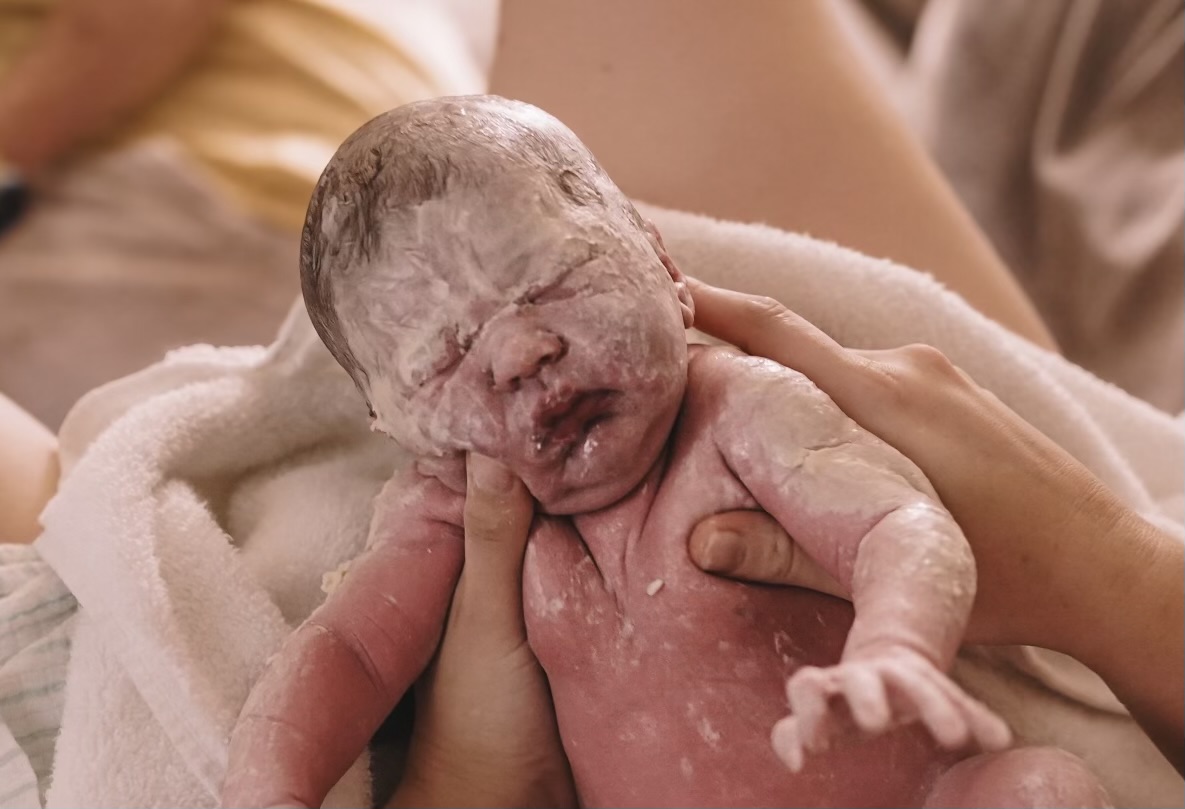
As much as welcoming a newborn into the world is full of wonder and curiosity, it can also be unnerving when you see things you don't expect or have never heard of. As midwives, we're often the first to help parents understand what's expected when meeting their baby for the first time. It's perfectly natural for parents to marvel at their little one's features—and it's equally natural to ask, "Is this normal?" Here's a guide to some of the most common newborn findings that might surprise new parents but are, in fact, completely typical.
That white, cheese-like coating on a newborn's skin might look unusual at first, but it's actually a marvelous substance called vernix caseosa. This protective layer develops on a baby's skin during the third trimester and serves to moisturize, protect against amniotic fluid exposure, and aid in temperature regulation. Fun fact: vernix has antibacterial properties that can provide an extra layer of protection for a newborn's delicate skin. While some parents might be eager to wash it off right away, letting vernix absorb naturally into the skin can be beneficial for those first few hours/days.
It's common for a newborn's hands and feet to appear bluish during the first 24-48 hours of life—a phenomenon known as acrocyanosis. This occurs due to the baby's circulatory system adapting to life outside the womb, prioritizing blood flow to vital organs. Reassure parents that this is not a sign of distress but rather an expected transition as their baby adjusts to their new environment. As circulation improves, this coloration will fade.
Yes, even babies can have breakouts! Baby acne typically appears around two to four weeks after birth and can last for several weeks to a few months. These tiny red or white bumps usually show up on the face and are thought to be caused by maternal hormones still circulating in the baby's system. While it may be tempting to treat or scrub the area, it's best to leave it alone and let it clear up on its own. Breastmilk can sometimes help when using it on baby's skin.
Newborns, especially those born a bit early, may be covered in fine, soft hair called lanugo. This hair helps protect the baby's skin in the womb and usually falls out within the first few weeks of life. Parents might be surprised to see their newborn with this gentle fur, but it's simply part of their transition from the womb to the world.
Those tiny, white or yellowish bumps often found on a baby's nose, cheeks, or chin are called milia. These are simply clogged oil glands and are harmless. Milia don't need any treatment and will usually disappear within a few weeks on their own.
These flat, blue-grey patches can appear on a newborn's lower back or buttocks and are more common in babies with darker skin tones. Known as Mongolian spots, they are caused by a concentration of pigment and are completely benign. They typically fade by early childhood, so parents don't need to worry about long-term effects.
It's not uncommon for a newborn's skin to peel, especially if the baby was born post-term. This shedding of the outer skin layer is completely normal and does not require any special treatment beyond gentle moisturizing. Encourage parents to avoid harsh products and let the natural process take its course.
Every newborn is unique, and what's normal for one baby might look different for another. As midwives, part of our role is to reassure parents that these common findings are just signs that their little one is adapting beautifully to the world. Providing gentle guidance helps set the stage for confidence and trust as they navigate this precious, early stage of parenting. And to refer to a higher level of care if necessary.
These normal newborn characteristics can be delightful conversation starters and learning moments for new parents. Armed with this knowledge, parents can focus on marveling at the miracle before them—one precious, vernix-kissed finger at a time.

1. Vernix Caseosa: Nature's Little Moisturizer
2. Acrocyanosis: Blue Hands and Feet
3. Baby Acne: Blemishes in Miniature
4. Lanugo: The Fuzzy Coat
5. Milia: Pearly Little Bumps
6. Mongolian Spots: Mysterious Blue-Grey Marks
7. Peeling Skin: Shedding the Outer Layer
A Gentle Reminder for Parents

